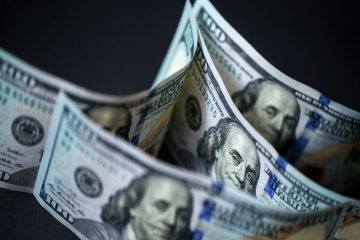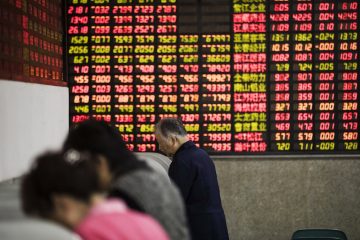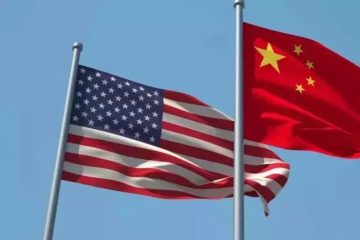| Symbol | Last | Change | % | High | Low |
|---|---|---|---|---|---|
| USD / SAR | 3.7524 | +0.0003 | +0.01% | 3.7524 | 3.7529 |
| Close | GMT Time : Sat Dec 13 2025 04:09 | ||||
USD/SAR : Intraday Live Chart
USD/SAR : Technical Signal Buy & Sell
| 5 Min Signal | 1 Hour Signal | 1 Day Signal |
|---|---|---|
| Buy | Sell | Buy |
USD/SAR : Moving Averages
| Period | MA 20 | MA 50 | MA 100 |
|---|---|---|---|
| 5 Minutes | 3.75 | 3.75 | 3.75 |
| 1 Hour | 3.75 | 3.75 | 3.75 |
| 1 Day | 3.75 | 3.75 | 3.75 |
| 1 Week | 3.75 | 3.75 | 3.75 |
USD/SAR : Technical Resistance Level
| Resistance 1 - R1 | Resistance 2 - R2 | Resistance 3 - r3 |
|---|---|---|
| 3.7522 | 3.7519 | 3.7517 |
USD/SAR : Technical Support Level
| Support 1 - S1 | Support 2 - S2 | Support 3 - S3 |
|---|---|---|
| 3.7527 | 3.7529 | 3.7532 |
USD/SAR : Periodical High, Low & Average
| Period | High Change from Last | Low Change from Last | Average Change from Last |
|---|---|---|---|
| 1 Week | 3.7531 -0.0007 | 0.0000 +3.7524 | 3.7527 -0.0003 |
| 1 Month | 3.7537 -0.0013 | 0.0000 +3.7524 | 3.7514 +0.0010 |
| 3 Month | 3.7537 -0.0013 | 0.0000 +3.7524 | 3.7507 +0.0017 |
| 6 Month | 3.7537 -0.0013 | 0.0000 +3.7524 | 3.7306 +0.0218 |
| 1 Year | 3.7600 -0.0076 | 0.0000 +3.7524 | 3.7295 +0.0229 |
USD/SAR : Historical Chart
USD to SAR Exchange Rate History: Saudi Arabia’s Pegged Currency and Economic Anchoring to the Dollar
The USD to SAR exchange rate has long been a symbol of monetary stability in the Middle East. The Saudi riyal (SAR) is pegged to the U.S. dollar, a policy that has underpinned Saudi Arabia’s fiscal planning, oil pricing, and economic vision since the 1980s. As the world’s largest oil exporter, Saudi Arabia benefits from a fixed exchange rate that ensures predictability in government revenues and international trade.
Understanding the USD/SAR exchange rate requires tracing the evolution of Saudi Arabia’s monetary regime, its response to oil cycles, and how the peg has withstood global shocks and regional instability.
1970s–1980s: From Flexibility to Formal Dollar Peg
During the early 1970s, the Saudi riyal operated under a managed float system influenced by global exchange rate changes post-Bretton Woods. In 1973, the SAR traded around 3.75 per USD, but fluctuations occurred due to oil price volatility and inflationary pressures.
By 1986, the Saudi Arabian Monetary Authority (SAMA) officially pegged the riyal at 3.75 per 1 USD, a rate that remains in place to this day. This move provided currency certainty amid the oil market downturn of the mid-1980s and the Iran-Iraq War.
The peg enabled more predictable budgeting, particularly since Saudi oil sales are denominated in dollars. It also helped anchor inflation expectations in a region prone to imported price volatility.
1990s: Fiscal Adjustment and Peg Reaffirmation
The 1990s presented both geopolitical and economic challenges for Saudi Arabia. The Gulf War in 1991 increased defense spending, while oil prices remained relatively subdued through most of the decade.
Despite fiscal deficits and rising public debt, Saudi Arabia chose to reaffirm the USD peg, maintaining SAR at 3.75. The kingdom relied on accumulated foreign exchange reserves and oil price recovery post-1998 to manage macroeconomic stability.
Throughout the decade, the currency remained fixed, supporting investor confidence and helping contain inflation, which hovered around 1–2% annually.
2000s: Oil Windfall and Structural Transformation
The 2000s were defined by a commodity super-cycle. Crude oil prices soared, and Saudi Arabia’s revenues surged, leading to massive fiscal surpluses. The country used this windfall to reduce debt, build reserves, and launch structural reforms.
Despite growing calls for currency revaluation—especially as inflation accelerated from 2006 onwards—SAMA resisted market pressure, maintaining the USD/SAR rate at 3.75. The peg continued to anchor import prices and provide stability during the 2008 global financial crisis, when the riyal again held firm even as global markets faltered.
2010s: Economic Diversification and Policy Continuity
The 2010s were pivotal in Saudi Arabia’s economic evolution. With declining long-term oil demand projections, the kingdom introduced Vision 2030, a comprehensive plan to diversify away from hydrocarbons.
The USD/SAR peg remained untouched throughout the decade—even during oil price collapses in 2014–2016. Saudi authorities viewed the peg as essential for macroeconomic planning and investor credibility. To support the fixed rate, SAMA drew on its reserves, which exceeded $700 billion in early 2014 but declined during the oil slump.
By 2019, reserves stabilized around $500 billion, and the peg continued to be central to fiscal and monetary coordination.
2020–2024: Pandemic, Oil Shocks, and Currency Defense
The COVID-19 pandemic and the 2020 oil price war between Saudi Arabia and Russia created unprecedented external shocks. Crude prices briefly turned negative, and Saudi revenues plummeted. Nonetheless, the USD/SAR rate remained firmly fixed at 3.75, with SAMA using its deep reserves and issuing domestic bonds to manage liquidity.
The 2021–2022 oil recovery allowed the kingdom to rebuild reserves and accelerate capital investments under the Public Investment Fund (PIF). With inflation rising globally, the U.S. Federal Reserve tightened monetary policy, and SAMA followed suit, mirroring rate hikes to maintain peg alignment.
As of April 2025, the USD/SAR exchange rate is still pegged at 3.75, showing no signs of deviation. The riyal remains a bedrock of Saudi economic policy, and all indicators suggest continued commitment to the peg amid fiscal reforms, VAT adjustments, and large-scale giga-projects under Vision 2030.
✅ Key:
🟢 = Saudi riyal appreciated vs USD
❌ = Saudi riyal depreciated vs USD
⚠️ = Minimal change / Range-bound
📊 USD to SAR Exchange Rate by Decade
| Decade | Avg. USD/SAR Rate (Approx) | Change vs. Previous Decade | Key Events |
|---|---|---|---|
| 1970s | 4.27 → 3.75 | 🟢 +12% SAR appreciation | Oil boom, pre-peg volatility, dollar alignment |
| 1980s | 3.75 | ⚠️ Stable | Peg formalized in 1986, Iran-Iraq War, oil market shifts |
| 1990s | 3.75 | ⚠️ Stable | Gulf War, low oil prices, fiscal deficits |
| 2000s | 3.75 | ⚠️ Stable | Oil surge, inflationary pressures, 2008 financial crisis resilience |
| 2010s | 3.75 | ⚠️ Stable | Vision 2030, 2014 oil crash, reserve drawdowns |
| 2020s (till 2025) | 3.75 | ⚠️ Stable | COVID-19, 2020 oil crash, monetary tightening, economic rebound |
USD/SAR - US Dollar / Saudi Riyal Currency Rate
Live Price of USD/SAR. USD/SAR Live Chart, Intraday & Historical Live Chart, Buy Sell Signal, USD/SAR News, USD/SAR Averages, Returns & Historical Data
» USD/SAR
» USD/SAR Real Time Quotes
» USD/SAR Live Chart
» USD/SAR Intraday Chart
» USD/SAR Historical Chart
» USD/SAR Buy Sell Signal
» USD/SAR News
» USD/SAR Videos
» USD/SAR Averages
» USD/SAR Currency Pair
» USD/SAR Historical Data








